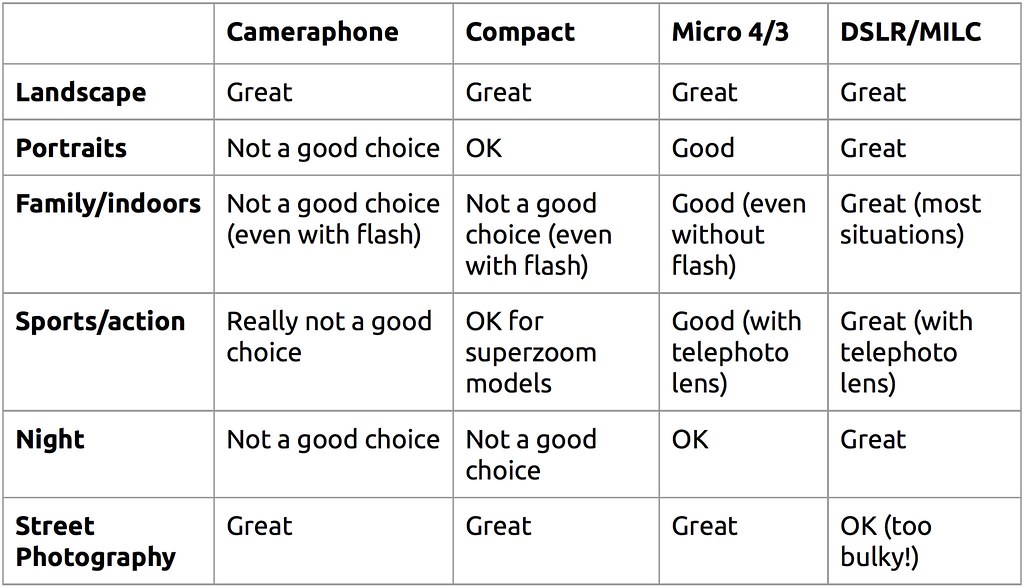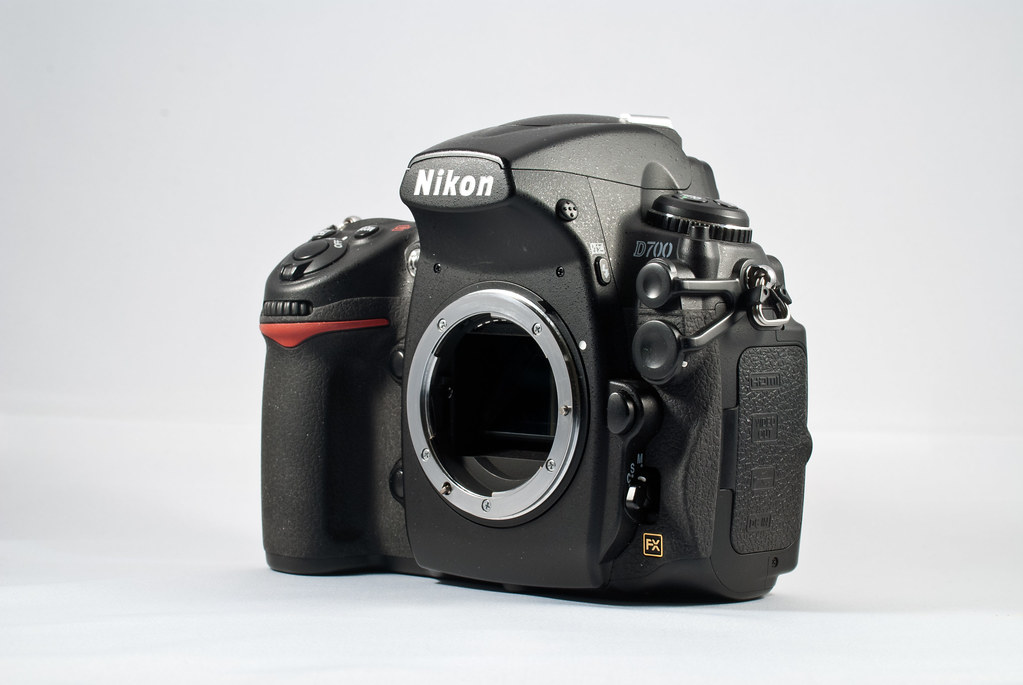With the holiday season fast approaching, many of you are going to be thinking about getting a new camera. But there’s a bewildering array of cameras that you can buy – so how do you cut through the marketing hype to work out which one is right for you?
Three competing factors should affect your choice: budget, versatility (how many different situations does it work in) and performance (how good the pictures are).
Our four main systems to compare are camera phones, compact cameras (point-and-shoot), micro 4/3 systems, and Digital Single Lens Reflex (DSLR) / Mirrorless Interchangeable Lens Camera (MILC) systems
General Recommendations
The best way to choose which camera system to purchase is to look at what you want to use it for. As a general rule, the more you want to do, the more you should expect to pay. Most of the time, increased versatility comes at a higher cost.
Likewise, more expensive cameras tend to be larger and heavier. There’s little point in getting a big camera if you never take it out with you because it’s too bulky; the best camera to get is the one you can comfortably use.
There are always exceptions, and you can do remarkable things with any of the following cameras, but as a rule of thumb:
- Casual shooters: cameraphone
- Beginners: the very versatile and affordable micro 4/3 system
- Intermediate: entry-level DSLR/MILC
- Semi-pro: a more advanced DSLR/MILC
Over the next few days, we’re going to go over these different camera systems in detail, but this is a very general and handy cheat sheet for each of the systems:
And how do these different camera systems stack up in terms of cost, versatility, and performance? Generally speaking, you get what you pay for, with Micro 4/3 coming out in the lead for the enthusiastic amateur:
The reference camera
There is a lot of confusing marketing speak around camera specifications. Throughout this series, we’re going to make fair comparisons between different cameras by comparing their specifications in terms of a ‘reference’ camera. The standard reference camera is the 35mm ‘full-frame’ SLR; it’s been the standard in photography for 50+ years and occupies a large space at the upper end of what is affordable for consumers.
For our purposes, we’re going to assume that we are comparing two different cameras by taking a photo standing in the same spot of a subject the same distance away. With this, we can use the ‘crop factor’ of the camera to work out what the equivalence is. Example: lets say we are taking a photo with an iPhone. To get the same shot with a Micro 4/3 camera you need a super-wide lens with a moderately small aperture.
The iPhone’s advertised specifications are an f/2.4, 4.1mm lens and a crop factor of 7.5 (don’t worry about these numbers for now). This is the same as shooting with a full-frame camera with a f/18, 31mm lens. A Micro 4/3 camera has crop factor of 2.0, so the Micro 4/3 equivalent of an iPhone would be shooting with a f/9, 15mm lens.
Comparing camera systems relative to the ‘reference camera’:
Characteristics to consider
Lets look in detail at two factors that are common points of consideration for people buying cameras – how ‘wide’ the lens is and deep or shallow the depth-of-field is.
Wide vs telephoto
Cameraphones and compact cameras tend towards shooting ‘wide’ images (i.e. ‘short’ focal length). These cameras are great for when you want to get a shot of a complete scene, but don’t generally capture small details in the scene itself.
If your subjects are more than 5 meters (~15ft) away, it’s worth considering using a camera with a zoom or telephoto lens. Compact ‘superzooms’ and zoom lenses on Micro 4/3/DSLR/MILC cameras offer this feature.
Depth-of-field
A well-liked look in modern photography is to have the subject sharp and the background ‘blurred out.’ This is sometimes referred to as ‘shallow depth of field.’ For cellphones this effect is virtually impossible for people, but it does work for small objects close to the camera. The effect is very modest with compact cameras; it is possible (though not great) with Micro 4/3 cameras; and is excellent with DSLR/MILC systems with the appropriate lenses.
Shallow depth-of-field images:
We’ll continue this series tomorrow with an in-depth look at cameraphones.










